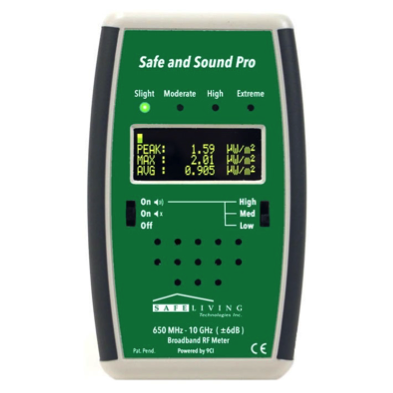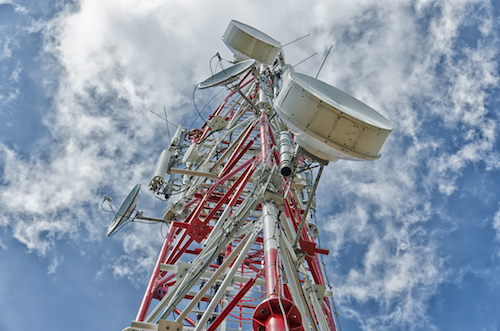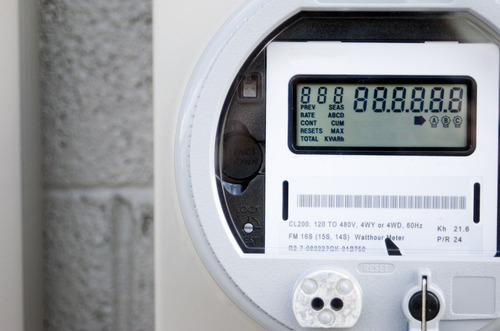What Is It?
Wireless radiation refers to the electromagnetic fields from equipment and devices that send and receive information (e.g., voice, video, data…) wirelessly rather than via wires or cables.
There are many obvious benefits of wireless technology – convenience, productivity, and efficiency to name a few. But, there are also downsides to our love of and growing dependence on wireless equipment and devices. A big one is the potentially harmful electromagnetic fields (EMF), also known as electromagnetic radiation (EMR), these devices create. As use of them increases so does our exposure to the electro-pollution they produce.
Products
Common Sources of Wireless Radiation

- Radio and Television
- Cell Phones and Smart Phones
- Cordless Landline Phones
- Telecommunication Towers and Antennas
- Wi-Fi and Wi-MAX
- Computers, Laptops, and Tablets
- Wireless Computer Peripherals (e.g., monitors, keyboards, mice)
- Wireless Printers and Scanners
- Wireless Headphones and Speakers
- Wireless Video Game Systems
- SMART Meters and Appliances
- Wearable Technologies (e.g., fitness trackers, smart watches)
- Digital Baby Monitors
- Digital Baby Monitors
- Remote Control Devices
- Wireless Fire Alarms and Security Systems
- Wireless Pest Control Devices
- Wireless Dog Fences
- GPS Systems and Devices
How Wireless Radiation Is Created
The information can be carried by continuous waves of energy (i.e., analog signals) or, more commonly today, via non-continuous bursts or pulses of energy (i.e., digital signals). Both types of signals travel through the air at the speed of light, radiating electromagnetic energy outward as they go.
As use of wireless equipment and devices has skyrocketed, so has the number of electromagnetic signals zipping through the air around us. Think about some places where people (often lots of them at once) can be found using smart phones, laptops, tablets, and other wireless equipment and devices. For example – homes, schools, office buildings, health clubs, coffee houses and restaurants, commuter trains and buses, airports, sports stadiums and arenas, etc. Now consider all of the wireless activities (e.g., calls, texts, browsing, streaming) carried out by individuals in these locations, and all of the wireless signals used to accomplish these tasks.
Imagine for a moment that we could give these signals an unpleasant smell like other forms of air pollution or a color to make them visible to the human eye. Most people would probably be surprised to see and smell just how much wireless “smog” there is around us.
Wireless Radiation Concerns
Measuring Wireless Radiation
The electromagnetic carrier signals used by common wireless devices today have frequencies that fall mostly within the radio wave and microwave regions of the electromagnetic (EM) spectrum. The strength of these signals can be measured with a radio frequency (RF) meter, such as the example shown here. Readings are typically given in microWatts per meter squared, microWatts per centimeter squared, milliWatts per meter squared, of Volts per meter.
Taking time to measure wireless radiation in your home and other places can help you identify specific sources of this type of EMF pollution in your environment and determine whether your exposure is higher than recommended by building biologists.
If you would like to measure wireless radiation in your environment, you can hire an experienced expert for a comprehensive EMF/EMR evaluation or take basic measurements yourself.

Recommended Exposure Limits
Building biologists evaluate the interior environment of buildings for a variety of irritants that may affect the health and wellbeing of occupants. They have developed a set of safe exposure guidelines for different types of EMF pollution and other irritants.
Here is what they recommend for radio frequency radiation, which is the type of radiation emitted by wireless technologies.
- Limit exposure to 10 microwatts per meter squared or less in sleeping environments. (This is equal to 0.01 microwatts per centimeter squared or less.)
- Many building biologists also recommend limiting exposure to 100 microwatts per meter squared or less during daytime hours. (This is equal to 0.1microwatts per centimeter squared or less.)
Reducing Your Exposure
As use of cell phones, smart phones, laptop and tablet computers, wearable technologies, and many other wireless devices has increased, so has our exposure to the EMF pollution these devices create. Unfortunately, a growing body of scientific research shows connections between wireless radiation and a variety of health problems. Some examples include cancer, Alzheimer’s, autism, fertility issues, poor sleep, tinnitus (ringing in the ears), and many more.
While it may be impossible to completely eliminate your exposure to wireless radiation these days, it is certainly possible to reduce it. Here are some ideas for relatively simple ways to do this.
Wireless Radiation Protection Products
No Results Found
The page you requested could not be found. Try refining your search, or use the navigation above to locate the post.






